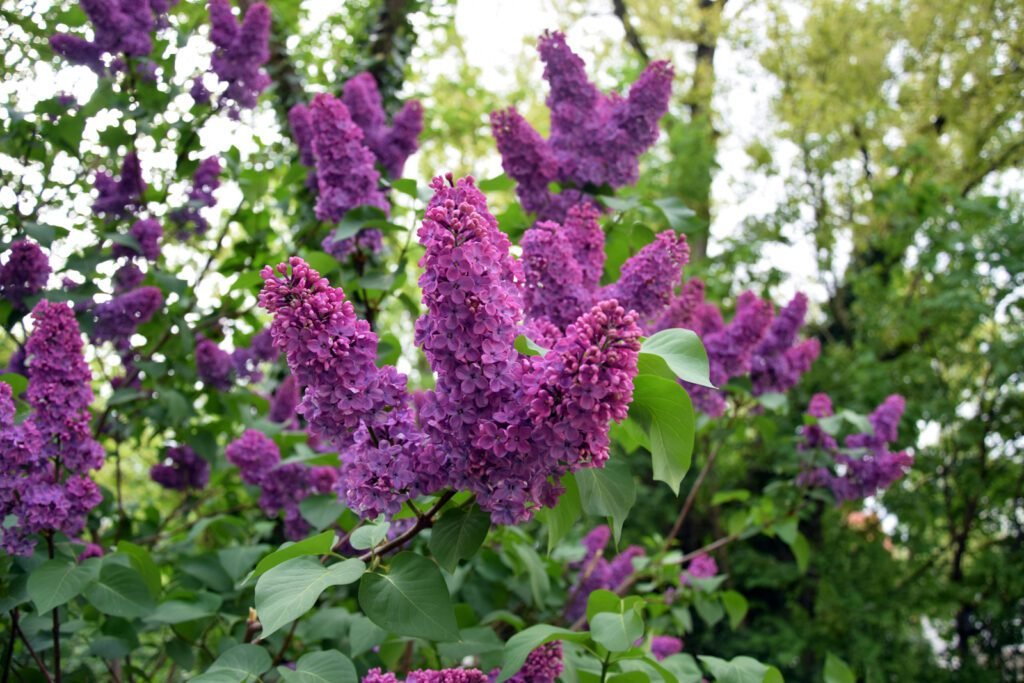The Common lilac timber (Syringa vulgaris) are deciduous shrubs that bloom inside the springtime in the northern states. Know about how to plant & care Lilac flower. These flora are the part of olive circle of relatives, in conjunction with different such decorative vegetation as ash bushes, forsythia timber, and privet hedges. The wonderful nice of many lilac varieties is the candy fragrances of their flowers. The blooms appear in branching clusters or panicles. Each flower is only approximately 1/3 inch throughout. The leaves are grey-inexperienced to blue-green in color and attain around 2 to five inches lengthy; they do not trade colour in the fall. And the bark of this shrub is grey to grayish brown. The satisfactory time to plant lilac bushes is in the early fall earlier than the ground freezes. They have a slight increase charge of 1 to two toes in line with year.
Common lilac timber are attractive enough to be treated as specimen vegetation. It has grown as focal points within the landscape. They are also often planted in rows along assets borders and pruned into unfastened hedges. Once they’re set up, lilacs don’t require a lot renovation.
How to plant & care Lilac flower, Follow us on Flowerworld.in
Planting of lilac tree
Grow lilac trees in full solar, which means at least six hours of direct daylight on maximum days. Lilacs will tolerate a few color, however too little mild can restriction their bloom. They do now not do well in full color.
Lilac timber decide on rich, loamy soil with sharp drainage and a neutral soil pH. They can tolerate clay soil, though it might stunt their increase.
Lilacs like a mild quantity of soil moisture. But soggy soil can lead to root rot and negative blooming. Water younger lilacs often to keep the soil lightly wet. Mature flora normally will simplest want watering at some stage in periods of drought.
Lilacs bushes prefer climates that have fairly cool summers. They aren’t advocated for warm, humid regions, inclusive of the Southern United States. High humidity can lead to fungal diseases on the plant. Lilac timber can advantage from a spring feeding, in particular when you have terrible soil. However, don’t use a fertilizer it’s high in nitrogen, which could cause poor blooming. Instead, use a balanced fertilizer, following label commands.
Pruning is critical for lilacs, each to sell flowering and to ensure air flow to prevent powdery mold and other problems. The proper time to prune is just after flowering is over, as lilacs bloom on vintage timber. Prune branches to skinny out the growth (for higher air stream) and to preserve the height of the shrub in test. Cut the oldest branches to the ground, as they may not be sturdy flower manufacturers anymore, however don’t take off greater than a 3rd of the full branches. Also, prune any susceptible or damaged branches. Florescence of Syringa vulgaris (common lilac) springtime. lilac blooming, Spring.

Common problems of Lilac
Lilacs are fairly hardy shrubs and might live on maximum pest and ailment issues. However, they’re susceptible to several. The fungal disorder powdery mould is generally visible on lilacs, especially during humid summers. Common pests that may affect lilacs and harm their foliage encompass scales and borers. If you see those tiny insects on the stems and undersides of leaves, treat your plant with neem oil or another insecticide.
Lilac leaves turning brown is probably because of several factors. Insufficient water, in particular for younger flowers, can result in browning leaves. Too an awful lot fertilizer also can harm the foliage, as can prolonged publicity to very strong daylight. Most regularly, even though, brown spots at the leaves are due to bacterial blight. This infection typically happens whilst growing situations for the lilac are subpar. So correcting its situations is one of the pleasant remedies for the ailment.
Known as the “Queen of Shrubs,” lilacs are of a number of the hardiest and maximum aromatic flowering timber we use in our gardens. Their stalked flowers are commonly available in sun shades of pink, pink, blue, and white, plus they upload each softness and peak to any lawn. And maximum kinds of lilacs develop up to 10 toes tall.
Please give a feedback in the comment box. Follow us on Facebook & Instagram.

